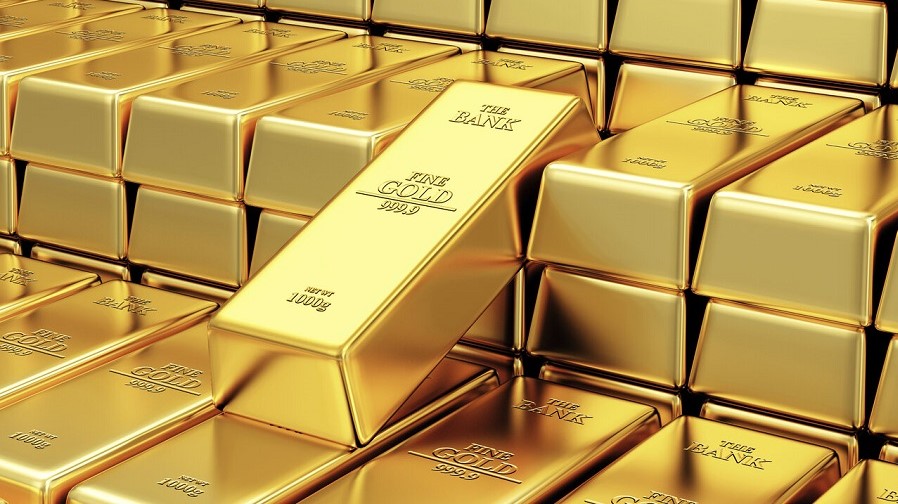Why Gold Prices Are Soaring in 2025 – What Experts Are Saying

Gold has always held a certain mystique — a symbol of wealth, a store of value, and a hedge against uncertainty. In 2025, that reputation has only grown stronger. The price of gold has broken past the $3,500 per ounce mark, reaching record highs and surprising even seasoned analysts who typically expect gold prices to fall when interest rates are high.
But this year, the old rules don’t seem to apply.
Despite the U.S. Federal Reserve holding off on cutting interest rates, gold continues to surge. Traditionally, rising interest rates make non-yielding assets like gold less attractive, but this time the opposite is happening. So what’s driving this unexpected rise?
At a recent economic forum hosted by Comercio Partners in Lagos, experts came together to shed light on what’s fueling the gold boom in 2025 — and why it may just be getting started.
According to Professor Joseph Nnanna, Chief Economist at the Development Bank of Nigeria, gold’s latest rally isn’t just a fluke — it’s a sign of deeper changes in the global economy. He believes the surge is being driven by a combination of geopolitical instability, inflation concerns, and increased gold purchases by central banks.
“When you look at the global picture, there’s so much uncertainty right now,” Nnanna explained. “In times like these, gold becomes more than just a commodity. It becomes a refuge.”
He described gold as one of the most reliable and time-tested stores of value available, especially in a world where traditional currencies are facing new pressures.
But the role of gold extends far beyond investment portfolios. Professor Nnanna also pointed out its importance in driving broader economic development, especially in countries with untapped mining potential.
“When a country produces and refines its own gold, it creates a ripple effect across multiple industries,” he said. “It’s not just about selling the raw material. It’s about building a full ecosystem — mining, refining, jewelry making, and even technology.”
This chain of economic activity can drive industrial growth and job creation in developing countries, turning gold from a passive asset into an engine for national development.
One of the major shifts happening behind the scenes is a quiet, but deliberate, change in how central banks manage their reserves. More and more, they’re moving away from an overdependence on traditional fiat currencies like the U.S. dollar.
“The dollar is still important,” Professor Nnanna noted, “but its value has been eroding. At the same time, gold has been climbing.”
He cited the example of Nigeria’s Central Bank, which holds a combination of foreign currencies — including the Chinese renminbi and the U.S. dollar — along with gold. But he warned that sticking too closely to fiat currencies can expose countries to economic shocks.
“We’ve seen how global events can trigger currency fluctuations,” he said. “Gold helps protect against that. It’s a smart way to balance the risks.”
In fact, diversification is no longer a theoretical goal — it’s become an urgent necessity.
Zeal Akaraiwe, CEO of Graeme Blaque Advisory, offered a similar view but with a stronger emphasis on geopolitics. He argued that the surge in gold buying isn’t just about financial security. It’s about reclaiming economic independence in a world where international trade is increasingly shaped by political agendas.
“Our ability to engage in global trade is being affected by decisions made thousands of miles away, especially in the U.S.,” Akaraiwe said. “That’s a vulnerability countries want to eliminate. Gold offers a way out.”
According to him, many central banks are intentionally reducing their reliance on the U.S. dollar — a process known as de-dollarisation — and turning to gold as a more neutral, universally accepted alternative.
“Gold doesn’t come with political strings attached,” he added. “That’s what makes it so powerful in today’s landscape.”
Both experts agreed that it’s time for emerging economies to adapt to the new realities of global finance. The old playbook is outdated. Central banks need to think differently, plan for a decentralized future, and embrace a wider range of assets, including digital currencies and stablecoins.
“The financial world is evolving rapidly,” Professor Nnanna said. “We’re not just dealing with inflation or interest rates anymore. We’re entering a world of blockchain, crypto-assets, and programmable money.”
For Nigeria in particular, the message is clear: gold should play a bigger role in its economic planning — not just as a reserve asset, but as a strategic tool for industrial growth and financial resilience.
The surge in gold prices in 2025 isn’t just about investors flocking to safety — it reflects a deeper transformation in the global financial system. As geopolitical risks mount, inflation remains stubborn, and fiat currencies lose ground, gold is once again proving its timeless value.
Whether you’re a policymaker, investor, or everyday citizen, the rise of gold is a reminder that in uncertain times, some things never lose their shine.





Responses